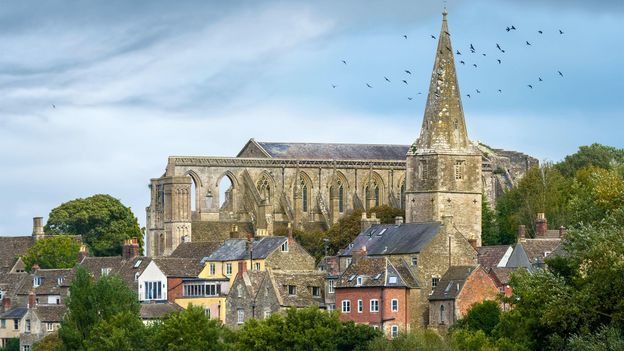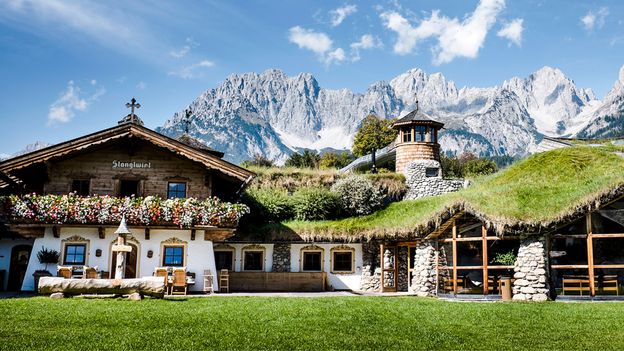An intensely pious king, Æthelstan’s reverence for Saint Aldhelm, the 8th-Century Abbot of Malmesbury, was one reason he wished to be buried here when he died in 939. The other reason, according to McAleavy, was political. While Æthelstan’s ancestors were buried in Winchester, the traditional seat of Wessex royalty, Malmesbury sits right on the border between the once-warring kingdoms of Wessex and Mercia. A symbolic signal, even in death, that Æthelstan had been king of all the English.
I met David Pope, who helped develop the Athelstan Pilgrim Way’s routes, inside the abbey. He’d recommended that we walk part of the first and second stages together (a 13-mile loop to/from Malmesbury), and before we set off, he presented me with a “Pilgrim Passport” that hikers stamp in each of the trail’s 36 churches, starting here in Malmesbury Abbey.
“Some are interested in history. For others, it’s a spiritual journey, or a way to escape the humdrum of daily life,” he said, after explaining how he’d walked each of the trail’s 100 miles before launch to ensure it was safe and navigable. “Even though it’s a church initiative, it’s not evangelism. People take what they want from it; they discover the routes at their own pace.”
Adding to Æthelstan’s mysterious aura, Pope also told me how the stone tomb, where I’d just made my own historical rather than spiritual pilgrimage, is empty. In the 12th Century, the king was moved here from the older Anglo-Saxon abbey, but he was later lost, his bones likely scattered during Henry VIII’s Reformations or smashed during the English Civil War when Malmesbury became a battlefield. Locals like Pope hope that one day Æthelstan will make a grand resurrection, perhaps resurfacing beneath a car park like Richard III in Leicester, but until then, no one’s the wiser as to where he might actually be.
 Richard Collett
Richard Collett













